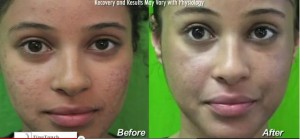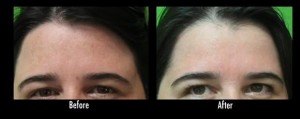Innovations in dermatology now allow for more acne scar treatment options. They range from topical treatments and facial peels to microdermabrasion and laser therapy. However, acne scarring differs greatly between individuals. The acne itself appears in five different forms, including comedones, papules, pustules, nodules and cystic lesions. Additionally, the cause of acne can range from environmental factors to hormone changes.
WHY ACNE CAUSES SCARRING
Deciding on an acne scar treatment also depends on how severe the scarring is on an individual. Regardless of the type of acne or cause, the body treats acne as an injury. When it heals the affected area, the repaired skin of a different consistency than surrounding.
After any type of injury, the body attempts to repair the issue as fast as possible. The intricate wound healing process produces excessive collagen during the remodeling phase of injury. While collagen has a very important role, it also contributes to adhesions, fibrosis and scar tissue due to overpowering the degradation of the extra cellular matrix. The collagen alignment in scar also differs from normal skin because its fibers are aligned rather than in basket-weave patterns. This also results in the acne scars looking thicker than surrounding skin.
ACNE SCAR TREATMENT WITH FRAXEL
Fraxel laser treatments stimulate the body’s ability to produce collagen. The light energy from the laser turns to heat on either the skin surface or dermis skin layer. The skin treats the heat source as another injury since the area is either ablated (vaporized) from the re:pair or aggravated from the Dual. Skin then begins the wound healing process. Both fractional approaches produce healthier collagen configurations.
The new collagen fibers fill in the depression from the initial acne scarring. With several treatments, the skin becomes smoother. The key is breaking down the thick consistency of the original collagen fibers from the acne. Two Fraxel laser systems are currently available in the United States.
Fraxel DUAL 1550/1927
Fraxel Dual is a non-ablative laser treatment that addresses mild to moderate acne scars. It also works well on actinic keratosis, melisma, photodamage, surgical scars and mild to moderate periorbital wrinkles. It incorporates the use of two laser strengths to stimulate collagen and refine skin.
The Erbium fiber laser (1550 nanometer) penetrates deeper to address more difficult scarring issues. The Thulium fiber laser (1927 nanometer) is more superficial and can be used on the entire body. Fraxel Dual can also be used on all skin tones.
Fraxel re:pair
Fraxel re:pair is an ablative treatment that address severe acne. It also assists with vascular dyschromia, pigmented lesions, rhytides, fine lines, textural irregularities and moderate to severe wrinkles and furrows in lax skin. It is a more invasive treatment that vaporizes skin with the dermis.
The re:pair also has noticeable results after one treatment. This includes skin tightening, tissue shrinkage and immediate coagulation. Due to its fraction delivery, it does minimal damage to the surrounding dermis layer of acne scars. However, re:pair is not recommended for those with darker skin tones due to complications. It works the best on those with the Fitzpatrick scale I to III skin tones.
ADDITIONAL ACNE SCAR TREATMENTS
Most topical treatments cannot effectively treat acne scars due to their inability to penetrate the layers of the skin and improve the collagen fiber configurations. Additionally, there are pros and cons to non-laser acne treatments.
Punch Graft
This procedure individually removes each acne scar with a surgical tool. Skin grafts from other parts of the body, typically behind the ear to match skin consist, are then used to replace the damage skin. After healing, the skin’s surface may still be irregular and discolored in the grafting areas. This is typically addressed with chemical peels and microdermabrasion.
Microdermabrasion and Dermabrasion
Both treatments “sand” the skin to reduce the appearance of acne scars. Microdermabrasion is less invasive. It exfoliates the skin with tiny magnesium salt crystals. While microdermabrasion usually improves mild acne scars, the treatment does not eliminate them.
Dermabrasion uses a diamond fraise or a textured metallic surface for the process. It’s more invasive, so the risk of additional scarring and skin discoloration increase. Those with darker skin tones should also refrain from it. Despite it extended recovery of approximately a week for new skin and up to three months for the redness to reduce, it is very beneficial to some with severe acne.
Topical Treatments
Topical skin treatments should be reserved for those with very mild acne scarring. They cannot penetrate the layer of the skin to address the collagen fibers, so benefits more subtle and require extended use. Topical products that contain retinoids provide better results, however. Retin-A (tretinoin) stimulates the rate of cell turnover with retinoic acid, while its chemical structure keeps skin moist. Over time and with continued use, Retin-A can improve the look and feel of acne scars.
ACNE SCAR TREATMENT IN LOS ANGELES
To figure out the best acne scar solution, contact Fine Touch Dermatology for a consultation. Laser skin treatments have improved significantly to eradicate acne scarring with minimal downtime. Dr. Sanusi Umar has helped numerous patients identify, treat and eliminate an array of skin imperfections.


